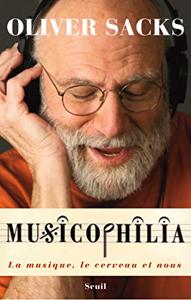
Want to learn the ideas in Musicophilia better than ever? Read the world’s #1 book summary of Musicophilia by Oliver Sacks here.
Read a brief 1-Page Summary or watch video summaries curated by our expert team. Note: this book guide is not affiliated with or endorsed by the publisher or author, and we always encourage you to purchase and read the full book.
Video Summaries of Musicophilia
We’ve scoured the Internet for the very best videos on Musicophilia, from high-quality videos summaries to interviews or commentary by Oliver Sacks.
1-Page Summary of Musicophilia
Overview
Some people are more sensitive to music than others, and some have no ability or feeling for it. Brain disorders can change our experience of music, sometimes making the sound of music a horrifying experience. Music also has the power to heal troubled minds and even revive motionless limbs.
Music has been a part of humanity since the beginning. It brings people together and can be used to relax or have fun. Music also creates a bond between all human beings, right? Not quite. This key point explores both the benefits and dangers of music: how it can cure immobility but also cause seizures in some people, as well as bring back language for those who’ve lost their ability to speak.
In addition, you’ll learn about people who see colors when they listen to music.
Finally, you will learn how to be creative. You just have to get struck by lightning.
Big Idea #1: Not everyone is good at music.
Music is a trait in most cultures. Some people are really good at it, while others don’t have any musical ability and aren’t interested in music. People who don’t have musical abilities or interest in music suffer from amusia.
About five percent of the population is tone deaf. They can’t tell if they’re singing off-key and are unable to recognize when others sing off key as well. Some people have rhythm problems, meaning that they can’t keep a beat. Che Guevara was said to be one of them; he would dance a mambo when everyone else danced tango.
In addition to being unable to follow a beat, people can also be rhythm deaf. This means they are unable to detect rhythmic variations in music from other cultures. They tend to only hear the rhythms of their own culture, and those become ingrained in them by age one year old.
People with a poor sense of rhythm can still enjoy music and dancing, but those who have amusia don’t even experience it as music. For them, melodies are just noise that sounds like screeching cars.
There are also people who can perceive music, but don’t like it. Some historical figures didn’t enjoy listening to music. Darwin says in his autobiography that he lost interest in listening to music as an adult, and Freud said he never listened to music voluntarily because he couldn’t derive any pleasure from it.
Big Idea #2: Music training changes the brain.
Now that we’ve looked at people who lack musical ability, let’s look at musicians. What distinguishes them from the rest? Research shows that their brains are noticeably different from those of non-musicians. Using brain imaging, neuroscientists have made precise comparisons of the sizes of various parts of the brain in musicians and non-musicians. These differences are so noticeable that experienced anatomists can instantly recognize a musician’s brain versus an artist or mathematician.
How do musicians get so musical? Are they born that way or does their environment affect them?
Research suggests that musicians are not born with different brain structures. Instead, they develop those differences through training. The younger you start playing an instrument, the more pronounced your brain’s response is to it. One study showed that just a year of violin training changed children’s brains. Another study showed that five-finger piano exercises can change the brain within minutes!
However, it’s the musicality that we all possess that allows us to learn music in the first place. Research shows that this ability is present in most people and suggests that we can all train our brains to work like those of musicians. The clearest example of this is Suzuki method, which involves listening and imitation: practically everyone who can hear responds well to this training.





